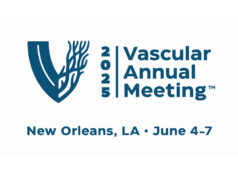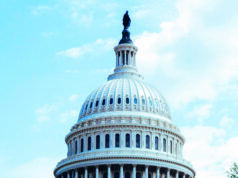By now you must be tired of my rants about other specialties making inroads into our “turf.” But a brochure came across my desk that really gave me heartburn.
The glossy, multipage flier announced a meeting devoted to the treatment of critical limb ischemia (CLI). The advertisement proudly claimed this 4-day event would be the largest medical conference dedicated to the treatment and prevention of CLI. It would usher in a “new era in limb salvage.” I was intrigued since a web announcement for the same meeting stated that it draws over 800 specialists including vascular surgeons, general surgeons, cardiologists, interventional cardiologists, general medicine/primary care physicians, interventional radiologists, podiatrists, wound care specialists, nurses, vascular technologists, and cardiac catheterization laboratory team members. I was taken aback! Are so many disparate specialists truly involved in the management of CLI?
Hmm, I thought. Maybe this is a meeting I should attend. I have spent most of my 36 years as a vascular surgeon trying to prevent amputations due to CLI, so I am always open to learning new things. I started to page through the calendar of events and talks. There really were some interesting presentations, including how to cross chronic occlusions, what wires to use, the controversy about drug eluting balloons, and many other endovascular techniques.
However, slowly it dawned on me that in the entire program there was not one presentation on surgery for CLI. It appeared that not a word was to be spoken about infrainguinal bypass in any form. Surgical treatment had been all but banished from the program. It was as if surgery for CLI had yet to be invented. DeBakey, Veith, Porter, Mannick, Leather, Dardik, Bergan and Yao … and all the other pioneers of modern vascular surgery, fictional characters in an Alice in Wonderland rabbit hole. Essentially, the entire program was devoted to endovascular therapies, medications for wound healing, hyperbaric oxygen, and other modalities that would not involve a trip to the operating room other than for a digit amputation or a debridement.
I could not understand how it was possible that a symposium dedicated to CLI would completely ignore arterial bypass. So I turned to the back of the program where there were listed approximately 75 authorities in the management of CLI. There were only 11 vascular surgeons listed out of the whole bunch. I scanned through the roster and was baffled to note that none of our thought leaders in vascular surgery were listed. Absent from the list were names like Joe Mills, Mike Conte, and Frank Veith, to name just a few. In fact, I recognized the name of only one, a young vascular surgeon who I know generally favors an endovascular approach. None of the six program course directors were vascular surgeons either.
I can only surmise that the organizers of this event regard surgical bypass as either an anachronism or possibly a procedure that should be listed in the same damning category as frontal lobotomy. No listed discussion of endovascular first or surgical bypass first for CLI. No mention of the BASIL trial and no presentation on the potential value of the BEST trial. Surgery seemed taboo – as if it were a dangerous treatment that causes, rather than prevents, major amputation due to CLI.
What has allowed this almost total denial of the benefits of surgical revascularization? How is it that vascular surgeons have been supplanted as leaders in the management of CLI and possibly all vascular disease processes? How is this going to impact vascular surgeons and, even more importantly, the vascular health of our patients?
In the past I have posited that it is because endovascular procedures can also be performed by specialists other than vascular surgeons. These physicians, facing decreased compensation for treating the conditions usually considered part of their bailiwick, look to vascular treatments to supplant their dwindling income. For example, cardiac surgeons have come to understand that ablating the saphenous vein is more cost-effective than using it for a life-saving CABG. Or dermatologists suddenly finding spider vein sclerotherapy to be the most exciting activity since pimple popping. Or invasive cardiologists discovering that there are a whole lot of arteries other than the coronaries just waiting to be dilated and stented whether they need to be or not. Then, once they become aware of the financial benefits of treating vascular patients they clamor for educational events that will teach them how to do even more – and, hopefully, do it better?
So that may be one reason that these non–vascular surgeon symposiums are starting to explode. But even more troubling is the role of industry, the suppliers of all the devices that allow physicians and surgeons to perform these endovascular procedures. Certainly, the major medical device manufacturers have been, and still are, very supportive of vascular surgery and vascular surgeons, but it is the endo world that is now their major playground. After all, how much profit will a company make when we bypass with a saphenous vein or use the cephalic vein for a fistula? It’s no wonder they want to exhibit at these endovascular meetings because it’s their stents, balloons, wires, catheters, lasers, and ablation devices that return a profit. And really, is it rational to expect industry to determine which specialist is most suited to use their product? One may hope that they would not sell a device to an untrained physician but, other than for insisting on some basic training, we cannot count on industry to credential its users.
However, the reasons for vascular surgeons becoming marginalized are even more complex. Further, I fear they may be insurmountable unless vascular surgeons admit that we are also partly responsible. First is the fact that, as a specialty, we were late to the party. Let’s face it, vascular surgeons did not invent endovascular procedures. It was Charles Dotter and cardiologists Gruentzig, Palmaz and Schatz who started the revolution. In fact, many of our earlier vascular leaders were so unimpressed that it took years before presentations about endovascular procedures made it into the SVS annual meeting or became part of vascular surgical training. Admittedly, since then many advances in these procedures have resulted from the genius of some vascular surgeons, especially in the treatment of aortic aneurysms, but which catheter or wire is named after a surgeon? Which surgeon invented the latest stent, ablation catheter, or saphenous venous ablation method? We have largely benefited from the inspirational work of interventional radiologists and cardiologists. They have invented the technologies and pushed the boundaries that have allowed us to access pedal and radial arteries, obliterate calcified arterial plaque, place medicated balloons and stents, and replace venous stripping with less invasive ablations. Moreover, they proved that these procedures can be done in outpatient centers where the remuneration exceeds that which we can earn when these procedures are performed in a hospital. So should we complain when cardiologists or interventional radiologists mount major symposiums dealing with vascular conditions? Yes, we may be correct that only vascular surgeons have been trained to understand all the ramifications of vascular disorders. However, this is changing as radiology and cardiology training programs increasingly add peripheral vascular disease to their curricula. Further, although vascular training programs now involve a great deal of endovascular training, many still do not offer significant exposure to some of the more “radical” therapies such as pedal access and advanced CTO techniques.
However, there is a more significant reason vascular surgeons are partly responsible for losing control over these symposia and vascular patients. That is, we have embraced endovascular therapies as being more financially remunerative, more “fun,” and less time consuming than open surgery. Why spend 4 hours bending over an operating table, harvesting veins from all over the body, staring through illuminated loupes and tediously sewing in a flimsy basilic vein into a tiny calcified tibial artery when, for a multiple of the payment that procedure would generate, one can spend an hour in the angio suite ballooning the responsible lesion. Better still, you get to do it all over again later and make the same amount of money twice! We probably have also brainwashed our referring physicians that this is best for the patient. After all, most internists still laughingly repeat the mantra “fem-pop, fem-stop, fem-chop.” Once convinced that endo is best, what’s to stop those doctors from allowing their favorite radiologist or cardiologist to treat their patient? That’s especially so since as a specialty we have not done a good job educating doctors and patients that vascular surgeons are also equally proficient in endovascular treatments. Vascular surgeons have been given an opportunity to prove one way or another whether surgical bypass plays a significant role in the management of CLI. That is by enrolling patients in the BEST trial, the first large NHLBI-supported RCT comparing endovascular to open surgical therapies. However, enrollment has been lagging to the point that the study may be prematurely terminated. Why is it that we have been so reluctant to enter patients? Is it ennui or is it that we lose income every time a patient is randomized to bypass rather than a lucrative outpatient atherectomy?
So now we are in an era where conferences and symposia on vascular issues are devoid of vascular surgical input. This may have serious consequences for patients. Physicians, including young vascular surgeons, unaware of the benefit of surgical bypass, will continue to attack the leg arteries until all the target vessels are beyond salvage. Finally, the vascular surgeon will be consulted to remove the leg and the amputation prevention symposium will have achieved the exact opposite of its goals.
Dr. Russell H. Samson is a physician in the practice of Samson, Showalter, Lepore, Nair, and Dorsay and clinical professor of surgery, Florida State University, Tallahassee. He is also the medical editor of Vascular Specialist.













